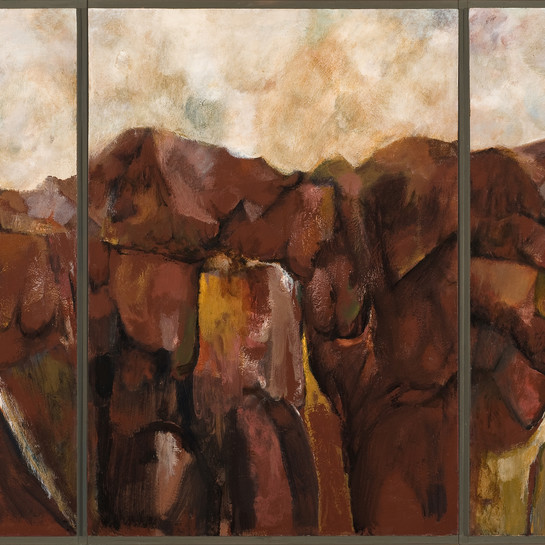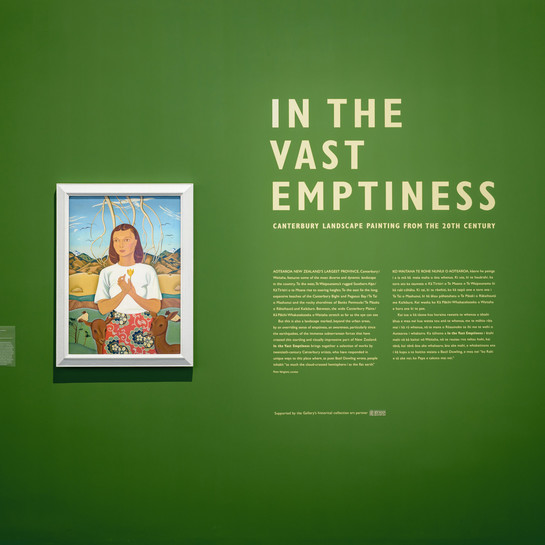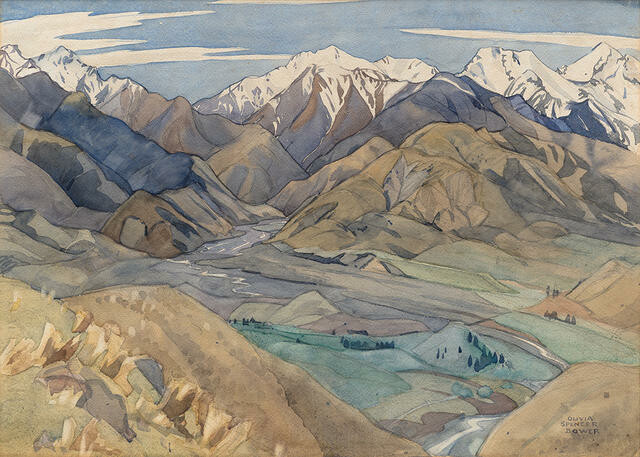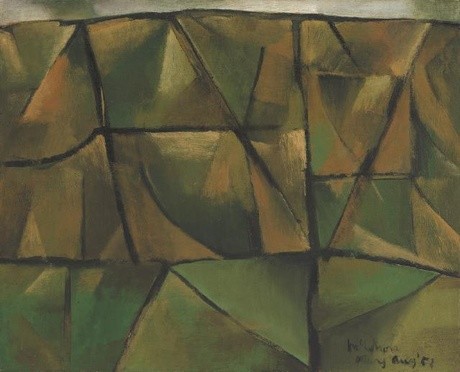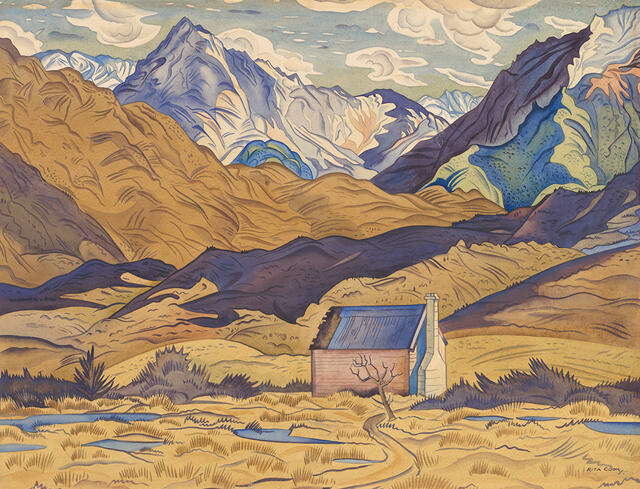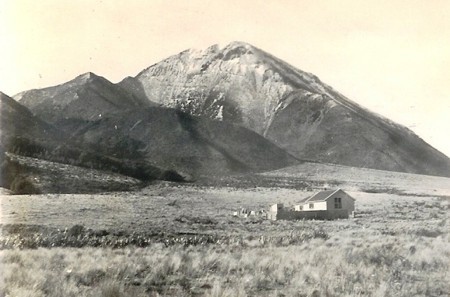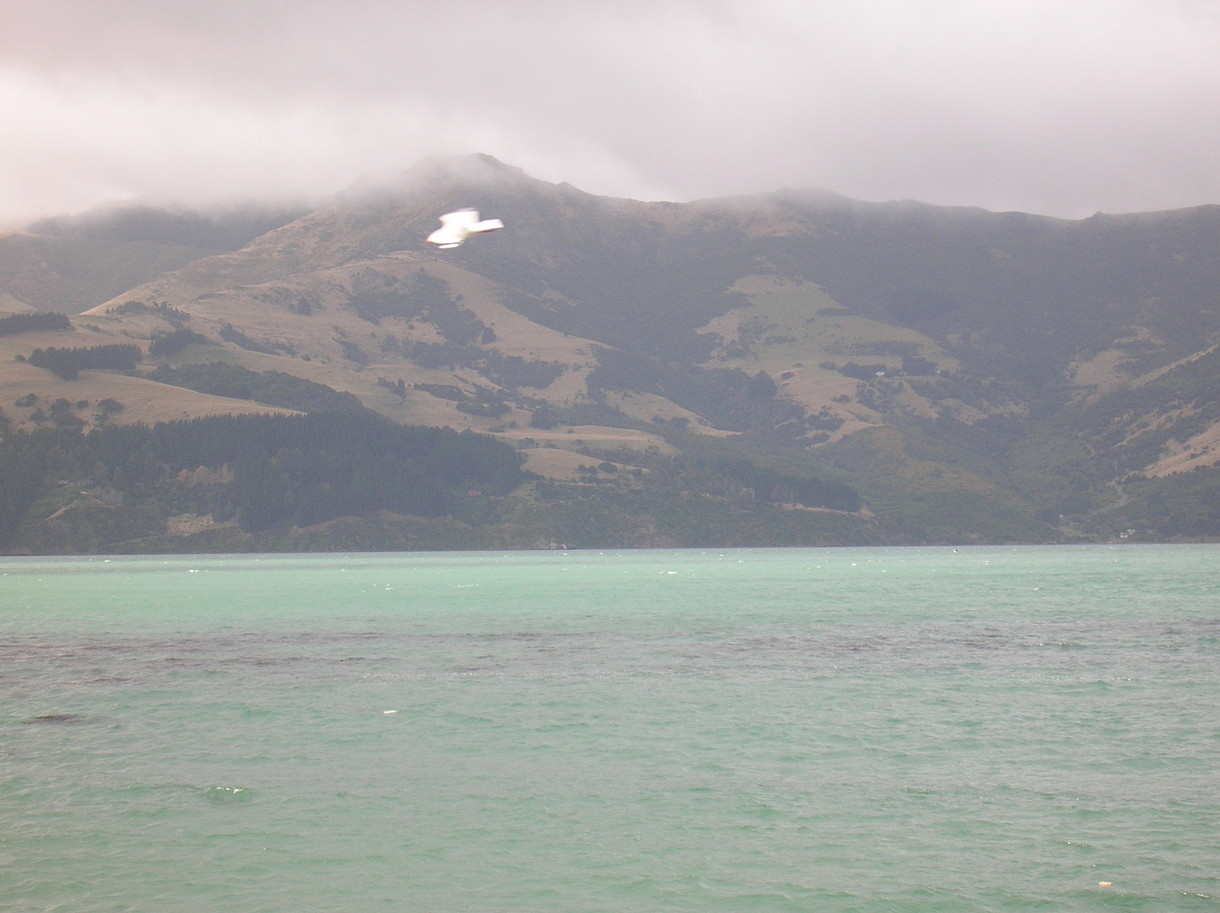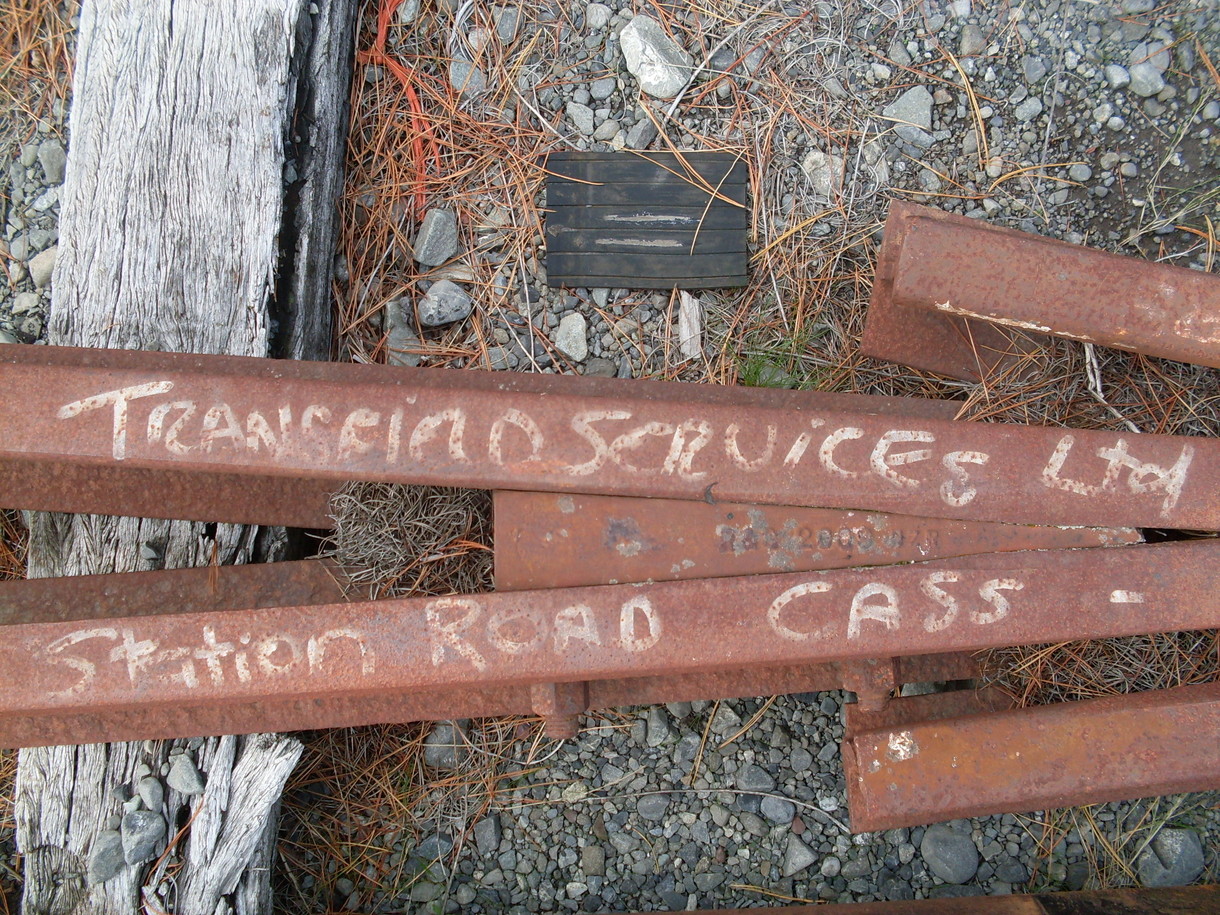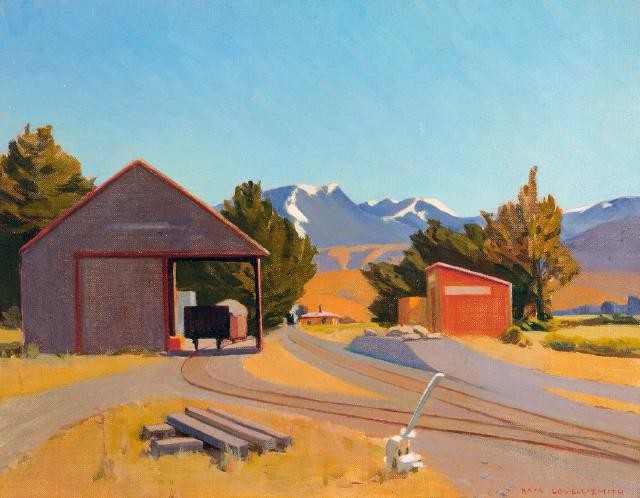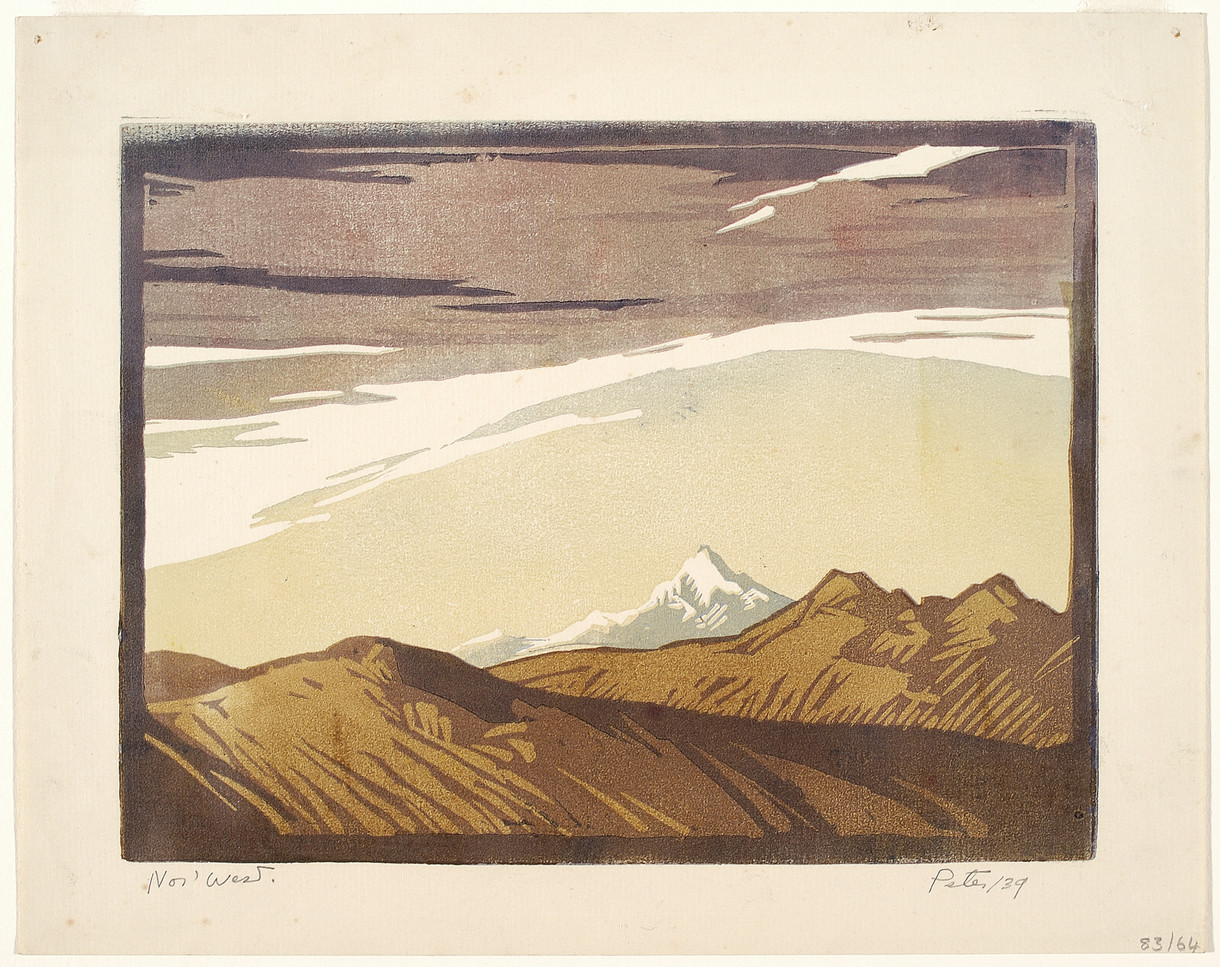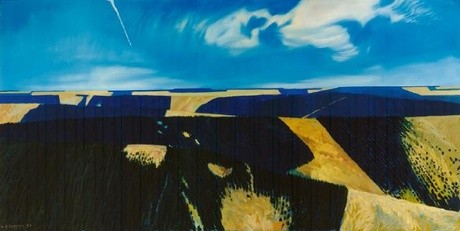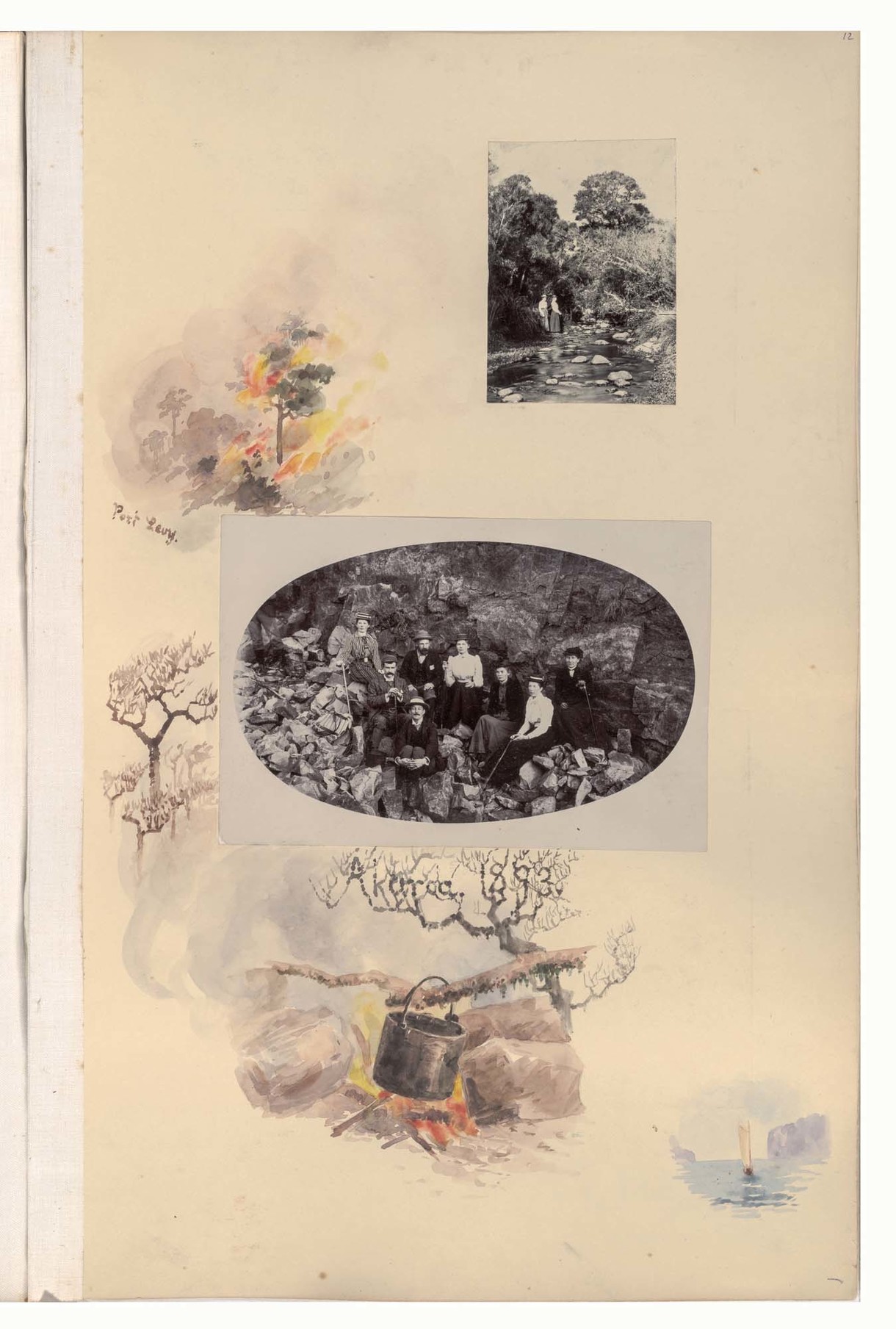Olivia Spencer Bower
England / Aotearoa New Zealand, b.1905, d.1982
Kaikoura Country
- 1941
- Watercolour
- Purchased 2013
- 602 x 775mm
- 2013/082
Location: Arcade
Tags: landscapes (representations), mountains, natural landscapes, snow (precipitation)
“The Māori name for Kaikōura is Te Ahi Kaikōura o Tama Ki Te Raki, the place where Tama Ki Te Raki cooked his crayfish. […] Another interesting thing about the mountains of the Kaikōura territory: you’ve got Te Parinui o Whiti, one of Kāi Tahu’s marker boundaries, and the highest peak, Tapuae o Uenuku. Tapuae means footsteps, the sacred footsteps of Uenuku. Uenuku is said to have been put ashore from the Uruao or Uruaokapuarangi canoe [said to have come from Hawaiki, led by Rākaihautū], and he climbed the mountain and named it Te Tapuae o Uenuku. The mountains behind have many different names; most of the Seaward Kaikōurashave Māori names. Behind them is the Awatere valley, inland; Tapuae o Uenuku is at the head of those valleys.”
—Tā Tipene O’Regan, 2016
Tama Ki Te Raki ~ mythical exploring ancestor
Te Parinui o Whiti ~ the White Bluffs
Kāi Tahu ~ tribal group of much of Te Waipounamu South Island
Uenuku ~ prominent Māori ancestor who lived in Hawaiki
He Kapuka Oneone – A Handful of Soil (from August 2024)
Exhibition History
He Rau Maharataka Whenua: A Memory of Land, 17 September 2016 – 18 February 2018
'The Māori name for Kaikōura is Te Ahi Kaikōura o Tama Ki Te Raki, the place where Tama Ki Te Raki [a mythical exploring ancestor] cooked his crayfish. What’s significant is the Kaikōura Ranges. The south Seaward Kaikōuras were named The Lookers On Mountains by Captain James Cook, so called because when Cook was coming down the coast some twelve miles offshore he encountered several double canoes out fishing. He kept trying to induce them to come alongside the ship, but every time the ship came towards them they paddled away and just sat watching – so he called the mountains behind them The Lookers On.
'Another interesting thing about the mountains of the Kaikōura territory: you’ve got Te Parinui o Whiti [the White Bluffs], one of Kāi Tahu’s marker boundaries, and the highest peak, Tapuae o Uenuku. Tapuae means footsteps, the sacred footsteps of Uenuku [a prominent Māori ancestor]. Uenuku is said to have been put ashore from the Uruao or Uruaokapuarangi canoe [said to have come from Hawaiki, led by Rākaihautū], and he climbed the mountain and named it Te Tapuae o Uenuku. The mountains behind have many different names; most of the Seaward Kaikōuras have Māori names. Behind them is the Awatere valley, inland; Tapuae o Uenuku is at the head of those valleys.' —Sir Tipene O’Regan
In the vast emptiness, 8 January - 21 August 2016
In 1977 Olivia Spencer Bower spoke about visiting and painting at a friend’s farm, Steepdown, the location of this painting, in Kaikōura during the early 1940s:
'You’re aware of the shifts of the hills and how they go into terraces. You can’t help but be aware of it. ‘Steepdown’ is rough country to walk in; when the floods are in you’ve got to get on horses and swim across the river to get out of the place. […] The farm is well named. I used to climb as far as I could to get the view over this country. We used to go for picnics to the top of the hills with the horses.'

